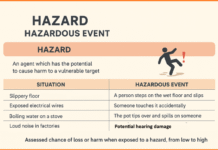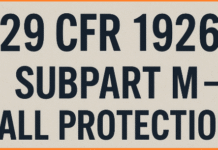Agro-Industry/Sugar Industry
Contents
Agriculture
- 2735 million people in the world are engaged in farming.
- 10 % in developed countries & 60 % developing countries.
- ILO estimates: from a total of 335,000 fatal workplace accidents worldwide, 170,000 agricultural workers are killed each year.
- Farming employs men and women, young & old.
- The human effort provides for 70% of the energy required for crop production in developing countries.

- Engaged in daily wages.
- Workload per person is high. Severe for children.
- Education level is low.
- Long hours of work resulting in fatigue.
- Physical stress is increased by heat & relative humidity. Frequent water consumption & rest breaks avoid beat stress.
- Risk of sprains & traumatic injuries due to repetitive labor intensive work.
- Direct poisoning can occur by direct contact with Pesticide spray of application equipment.
Agriculture Harvesting
- Harvesting is done mostly manually with sickles.
- Lacerations and incised wounds are common in rice and sugarcane fields.
- Lifting heavy loads.
- Long hours of exposure.
- Repetitive motion and awkward or stooped posture (Bending requires 18% more energy then squatting)
- Poisonous insects & snakes.
- Livestock-related hazards where animal-drawn reapers are used.
- Tractors, machinery & grain handling equipment.
- Risk of fire during drying/ storage.
- Threshing includes separation of grains from the ear heads.
- This includes rubbing the ear heads with one’s feet, beating of the harvested crop on a plank, animal treading.
- Medium-heavy Work.
- Pedal threshing work is more strenuous then manual threshing.
- Results in muscular strain.

- Winnowing is a process to separate grains from the chaff by blowing air, using a hand tan or a pedal or motor-driven fan.
- Decorticating involves breaking of shells and removal of seeds (groundnut, castor beans). Bodily discomfort due to continuous sitting or squatting posture.
Agro-Industry Cotton
- When the crop is ready, it is plucked in the morning between 5 am to 9:30/10 am. After that, it is not very congenial time.
- Cotton is stored at the house and thereafter sells it.
- Transportation is by trucks, tractors, bullock carts.
- Cotton upper: It is like a blower. It removes stones, earth and other foreign particles.
- Gin: Single and double roller type gins are there. This process removes the seeds.
- Gins are in groups of 40, 60 and 80, 100 in factories.
- Press: the cotton is then pressed into bales of 1 ton in a 200 tons hydraulic press.
Accident prone Zone: Fire
- Cotton is stored in open compounds. Risk of fire by biddies or cigarettes.
- Friction in gin.
- Crackers or other volatile materials stored near cotton.
- Electrical short circuit.
- Bearings of the machine are running hot and dry without oil.
- Cotton fluff accumulated on electric wiring, walls, and roof.
- Bursting of pipes due to overpressure in the hydraulic system.
Control Measures
- Install water sprinkles all around the u n and press and in the compound.
- To provide fire extinguishers.
- To check loose connections in electrical installation to prevent sparks.
- Clean cotton fluff on a weekly basis.
- All motors should be totally enclosed type.
- Prohibit smoking inside the premises.
- Preventive maintenance of the hydraulic system of press to avoid pipe bursting.
Agro-industry Sugar
- Sugar cane is brought to the factory by truck tractors or bullock carts.
- It is unloaded in the hopper of the crane carrier.
- The cane is cut by rotating blades into a fibrous form.
- It moves on conveyors to the mill.
- It is crushed between grooved rollers to remove juice.
- Juice is pumped to a big drum having vacuumed inside and felt fitted from outside, Juice is sucked and mud is separated, while the drum is rotating through the trough which contains juice.
- Flakes of mud are separated from outside and further used as manure.
- Juice is pumped to juice heater. It is beaten by steam at 20 to 15 psi and pumped to a vessel called quadruple the juice becomes thick.
- It is pumped to a crystallizer where molasses and sugar are separated.
- The thick product is dropped in the centrifugal basket where it rotates at very high speed. Moisture is totally removed and the sugar is dropped on vibrating screens.
- Different grades of sugar are separated on the screen directly filled in gunny bags.
- The bags are stitched and conveyed to the warehouse from where it is distributed.
Accident Hazards
- Cane carrier: Fencing from all sides. No one should stand under raised sugar cane by crane.
- Crushing rollers: Proper guarding, insulation, foundation, isolation from other areas
- Electrical Hazards: Proper earthing & maintenance of electrical equipment.
- Fire in bagasse area: No smoking, Fire hydrants.
- Bagassosis: Good ventilation, respirators, air monitoring.







